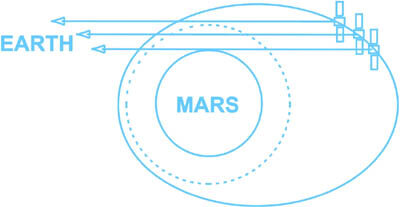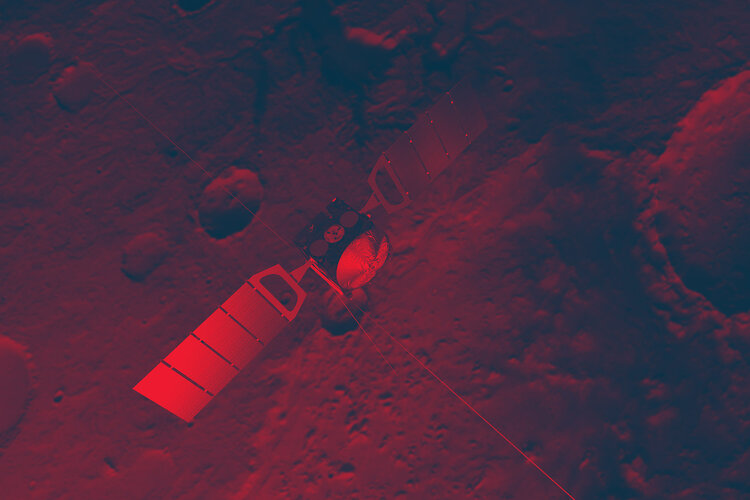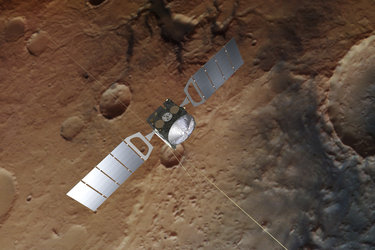ESA’s Martian weather report
Every day, people around the world tune in weather forecasts to plan their days ahead. Soon ESA will be delivering the same service for Mars, thanks to an ingenious experiment on board Mars Express.
Scientists around the world will be able to use this for some very special planning of their own. The Mars Radio Science Experiment, or ‘MaRS’, is a very special one on the European Mars Express spacecraft, which is now in its final operational orbit around Mars. This experiment requires no additional hardware – only the main antenna that Mars Express uses to communicate with the Earth.
Yet it will provide the precise condition of the Martian atmosphere from ground level up to an altitude of fifty kilometres. Included in these data will be a measure of the ground air temperature of Mars to twice the accuracy usually seen in weather reports on Earth!

To gain this information, scientists on Earth must transmit a precise signal to Mars Express, which then sends it back, unchanged, once Mars Express has moved close to the limb of Mars. Here the radio signal has to pass through the thin atmosphere of Mars.
The temperature, density and pressure of the atmosphere cause subtle changes in the signal that are detected on Earth and which, when analysed, allow the scientists to see what the atmospheric conditions are on Mars.
Equally astonishing is that MaRS can detect minuscule variations in the movement of Mars Express. Mars Express needs only to vary its expected motion by just half the speed of a garden snail and this too will be detected by the MaRS analysis software.

These movements are caused by the spacecraft passing over Martian features such as mountains or the polar caps, whose masses cause tiny variations in the gravitational pull on Mars Express compared to when the spacecraft is flying over a flat plain or basin.
The data will be invaluable in determining the thickness of the planetary crust and charting the seasonal variation in the carbon dioxide ice sheets that make up the Martian polar caps.

“We aim to run the experiment for the next four years, providing a better understanding than ever before of the daily and seasonal variations that occur in the Martian atmosphere,” says the MaRS Principal Investigator Martin Pätzold, of Universität Koln.
Such data will allow planetary scientists on Earth to construct more accurate computer programs to simulate or ‘model’ the behaviour of the Martian atmospheric circulation. This ability could prove invaluable to future mission planners, especially for those scientists contemplating landing sensitive equipment, or even manned missions on the surface of Mars, perhaps as part of ESA’s proposed Aurora programme.
The first data from MaRS will be collected on 19 January. Although this particular sweep will be treated as a test run, Pätzold hopes to be in possession of his first Martian weather report this April.















 Germany
Germany
 Austria
Austria
 Belgium
Belgium
 Denmark
Denmark
 Spain
Spain
 Estonia
Estonia
 Finland
Finland
 France
France
 Greece
Greece
 Hungary
Hungary
 Ireland
Ireland
 Italy
Italy
 Luxembourg
Luxembourg
 Norway
Norway
 The Netherlands
The Netherlands
 Poland
Poland
 Portugal
Portugal
 Czechia
Czechia
 Romania
Romania
 United Kingdom
United Kingdom
 Slovenia
Slovenia
 Sweden
Sweden
 Switzerland
Switzerland


































